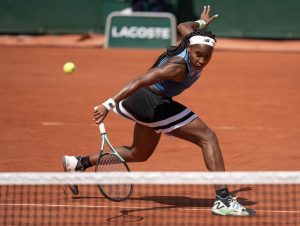Rafael Nadal and Roger Federer are set to meet for the 39th time with a place in the Indian Wells final on the line. Theirs has been one of the standout rivalries in this golden generation of men’s tennis. Nadal has three times won the title in the Californian desert, whilst Federer is a five-time champion at this event. Both men are also doubtless eager to start hauling in Novak Djokovic, the third man in this mighty triumvirate, at the top of the rankings. Booking their place in Sunday’s final would certainly be a step towards doing just that. But what will be the keys to the match?
Can Nadal find his linear shots?
Though Nadal was once able to rely on his cross-court forehand to wear Federer down, the Swiss’ switch to a larger racquet face has done much to shore up his backhand. That has left Nadal in need of a new strategy to overcome Federer. Fortunately for the world #2, it is a fairly obvious one. Nadal must now rely on linear shots, particularly his down the line forehand, in order to force Federer deep into the court and out of position, allowing Nadal to gain the advantage.
The reason linear shots are such a valuable weapon for Nadal is that Federer is typically forced to surrender his court position to retrieve them. In doing so, he often loses control of the rally as he is no longer able to take time away from Nadal by hitting the ball on the rise. And when Nadal is in the ascendancy in the rally against Federer, who relies on playing first-strike tennis against the very best, it is difficult indeed for the world #4 to regain control of proceedings.
That being said, it cannot be ignored that taking the ball down the line introduces an unusual element of risk into Nadal’s game. It is surely for that reason that the Spaniard is so often reluctant to break out of his cross-court patterns. However, as Federer’s five straight wins against Nadal illustrate, the tide in their rivalry has turned. Thus, Nadal is no longer able to play within himself when up against Federer. Now, taking risks with ambitious and aggressive play is essential to Nadal’s chances.
Who will win the battle of the forehands?
Federer is unquestionably a better server than Nadal, whilst few would take Federer’s backhand, for all its aesthetic qualities, over Nadal’s rifling two-hander. However, there is comparatively little to choose between the two men’s forehands. Nadal hits his with a vicious combination of pace and spin, that is difficult indeed for Federer to cope with, particularly if he is forced to back off from the ball into his backhand corner. That is the strategy Nadal long used against the Swiss, but one that has lost much of its efficacy, as mentioned above.
Federer hits his forehand with considerably less spin. Whilst that makes it easier to deal with when in position, it also means it flies faster through the court and penetrates further than Nadal’s looping, lassoed forehand. Indeed, for all the improvements to the Federer backhand, it is still the Swiss’ forehand that is his most dangerous weapon off the ground. And it is one he will need to be firing if he hopes to hit through the Spaniard’s suffocating defence.
Serve against serve
Federer is unquestionably the most effective spot-server in the men’s game. Indeed, the peerless accuracy of his serve is illustrated by the fact that he has served the most aces below 120 mph in the history of the ATP Tour. However, Nadal, despite not being known for his qualities from the line, has improved his own serve significantly during the off-season. So far, only Djokovic, almost certainly the greatest returner of all time, has been able to make a serious dent in it.
Nadal will surely be hoping to continue that impressive run from the line. He has been broken just three times all tournament, whilst breaking serve himself on 14 occasions. If he can maintain such impressive numbers against Federer, he will surely have more than a chance of claiming victory. However, Federer’s ability to both block returns back into play and hit through them has allowed him to neutralise serves far bigger than Nadal’s. Thus it is certainly too soon to view Nadal’s serve as giving him a decisive edge.
Main photo:
Embed from Getty Images






